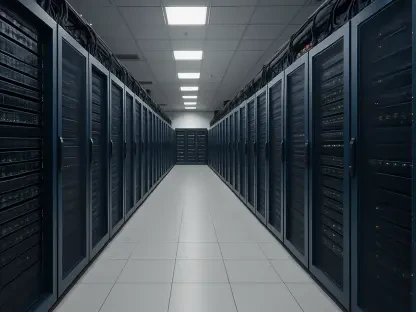Imagine a world where remote work is the norm, and millions of employees access sensitive corporate data from diverse locations daily, only to find their gateway—SSL VPNs—under siege by sophisticated ransomware actors. This scenario is not a distant fear but a pressing reality for many organizations relying on SonicWall SSL VPNs to secure their networks. As cyber threats evolve, the importance of robust virtual private network solutions has never been clearer, especially with recent reports highlighting vulnerabilities in these systems. This review delves into the technology behind SonicWall SSL VPNs, evaluates their security features, scrutinizes recent threats, and considers their future in an increasingly hostile digital landscape.
Understanding SonicWall SSL VPN Technology
SonicWall SSL VPNs play a pivotal role in enabling secure remote access to corporate resources by establishing encrypted connections over the internet. Unlike traditional IPsec VPNs, which often require complex client software and configurations, SSL VPNs offer a more user-friendly approach, typically operating through standard web browsers with minimal setup. This ease of deployment makes them a popular choice for businesses seeking to balance accessibility with security.
The significance of SSL VPNs has grown exponentially with the rise of remote work, as organizations increasingly depend on these tools to protect data across dispersed workforces. Their ability to provide secure access without the overhead of extensive infrastructure aligns with the modern need for agility in network management. As cyber threats become more sophisticated, the demand for reliable and adaptable VPN solutions continues to surge.
This technology, while innovative, must constantly evolve to address emerging risks. SonicWall has positioned itself as a key player in this space, offering features tailored to meet the demands of a dynamic threat environment. However, understanding the strengths and limitations of their SSL VPN offerings requires a closer look at both their capabilities and the challenges they face.
Key Security Features of SonicWall SSL VPNs
Robust Encryption and Authentication Standards
At the heart of SonicWall SSL VPN security lies a commitment to strong encryption protocols that safeguard data confidentiality and integrity during transmission. Utilizing industry-standard algorithms, these VPNs ensure that sensitive information remains protected against interception by malicious entities. This foundational layer of security is critical for organizations handling proprietary or personal data.
Authentication mechanisms further bolster SonicWall’s defenses, with support for multi-factor authentication (MFA) playing a central role. By requiring multiple forms of verification, such as passwords combined with time-based one-time passwords, the risk of unauthorized access is significantly reduced. This approach addresses common vulnerabilities associated with stolen or weak credentials.
While encryption and authentication form a solid baseline, their effectiveness depends on consistent updates and proper implementation. Organizations must ensure that these protocols are configured correctly to maximize protection, as missteps in setup can create exploitable gaps. SonicWall’s focus on these areas demonstrates a proactive stance toward securing remote connections.
Endpoint Security and Granular Access Controls
Beyond encryption, SonicWall SSL VPNs incorporate endpoint security features to verify the trustworthiness of connecting devices. Compliance checks ensure that only devices meeting predefined security standards—such as up-to-date antivirus software or specific operating system versions—can access the network. This reduces the likelihood of compromised devices serving as entry points for attackers.
Granular access control policies offer administrators the ability to tailor user permissions based on roles or specific resource needs. For instance, a contractor might be granted access only to particular files, while full-time staff could have broader privileges. Such precision in access management helps minimize the attack surface and limit potential damage from breaches.
These features collectively enhance the security posture of organizations using SonicWall solutions. However, their success hinges on regular policy reviews and updates to adapt to new threats. As endpoint diversity grows with the proliferation of personal and corporate devices, maintaining stringent controls becomes an ongoing challenge for network administrators.
Emerging Threats Targeting SonicWall SSL VPNs
Recent months have seen a notable increase in ransomware attacks targeting SonicWall SSL VPNs, with groups like Akira ransomware actors exploiting these systems for initial access. Reports from late July highlight multiple pre-ransomware intrusions occurring within a short timeframe, raising alarms across the cybersecurity community. These incidents underscore the critical need for heightened vigilance around VPN security.
Findings from security researchers, including Arctic Wolf, point to the possibility of zero-day vulnerabilities in SonicWall devices, even those that are fully patched. In several cases, accounts protected by MFA were compromised, suggesting that attackers may have found ways to bypass these safeguards. Additionally, the use of Virtual Private Server hosting for VPN authentication has been identified as a tactic to mask malicious activity and evade detection.
The rapid progression from initial access to ransomware encryption, as observed in these attacks, leaves little room for response. Since malicious VPN logins have been tracked as early as October of the previous year, with a significant uptick in activity noted recently, the urgency to address these threats cannot be overstated. Network edge devices like VPNs remain prime targets due to their internet exposure and often limited endpoint detection coverage.
Real-World Implications and Industry Applications
SonicWall SSL VPNs are integral to sectors such as healthcare, finance, and education, where secure remote access to sensitive data is non-negotiable. In healthcare, for instance, professionals rely on these systems to access patient records securely from remote locations, ensuring continuity of care. Similarly, financial institutions use them to protect transactions and client information against unauthorized access.
The consequences of recent ransomware attacks on these systems have been severe, leading to data breaches and significant operational disruptions for affected businesses. Some organizations have had to disable VPN services temporarily to mitigate risks, while others have faced costly downtime and reputational damage. These incidents highlight the real-world stakes involved in securing remote access solutions.
In response, several companies have ramped up monitoring efforts and implemented stricter access controls to contain potential breaches. Others have collaborated with security vendors to enhance threat detection capabilities, illustrating a growing recognition of the need for proactive measures. These use cases emphasize that while SonicWall SSL VPNs offer vital functionality, their protection must be continuously reinforced against evolving threats.
Challenges Facing SonicWall SSL VPN Security
The potential existence of zero-day vulnerabilities poses a significant technical challenge for SonicWall SSL VPNs, as these flaws can evade existing patches and security mechanisms like MFA. Such gaps allow attackers to gain access even to updated systems, creating uncertainty for organizations that rely on timely vendor fixes. Addressing these unseen weaknesses requires advanced detection methods and rapid response strategies.
Network edge devices, including VPNs and firewalls, are inherently vulnerable due to their public-facing nature and frequent lack of comprehensive endpoint detection and response coverage. This exposure makes them attractive entry points for ransomware actors seeking to infiltrate corporate networks. The absence of robust monitoring on these devices often results in delayed threat identification, compounding the risk.
Efforts to mitigate these issues are underway, with SonicWall collaborating with third-party researchers such as Arctic Wolf, Google Mandiant, and Huntress to investigate recent incidents. While these partnerships are promising, the broader challenge of securing internet-connected devices persists. Continuous improvement in security practices and technology is essential to stay ahead of adversaries exploiting these critical systems.
Future Prospects for SonicWall SSL VPN Security
Looking ahead, advancements in SonicWall SSL VPN technology could focus on enhancing zero-day detection capabilities to identify and neutralize threats before exploitation. Innovations in machine learning and behavioral analysis might offer predictive insights into potential vulnerabilities, allowing for preemptive action. Such developments would mark a significant step forward in safeguarding remote access solutions.
Proactive measures, including enhanced log monitoring and stricter access policies, will likely play a larger role in preventing future attacks. Integrating services like botnet protection could further help detect and block malicious actors targeting VPN endpoints. Additionally, reinforcing MFA with more resilient methods may address current bypass techniques employed by sophisticated threat groups.
The long-term impact of evolving ransomware tactics could drive changes in VPN security standards across the industry. As attackers adapt, SonicWall and similar providers may need to redefine best practices, emphasizing automation and real-time threat intelligence. From 2025 onward, the focus might shift toward creating more resilient frameworks that anticipate rather than react to emerging cyber risks.
Final Thoughts on SonicWall SSL VPN Security
Reflecting on this evaluation, SonicWall SSL VPNs demonstrate considerable strengths in delivering secure remote access through robust encryption and authentication protocols. However, the surge in ransomware attacks, coupled with potential zero-day vulnerabilities, exposes critical weaknesses that demand urgent attention. The collaboration with threat research teams during these incidents proved vital in understanding the scope of the challenges faced.
Moving forward, organizations that rely on these systems are taking actionable steps by enhancing monitoring, enforcing stricter access controls, and considering temporary service disabling where risks are high. Exploring partnerships with managed detection and response services also emerges as a practical solution to bolster defenses. These measures aim to mitigate immediate threats while awaiting comprehensive patches or updates.
Ultimately, the journey to secure SonicWall SSL VPNs highlights the necessity of continuous innovation in cybersecurity. Future considerations include investing in advanced threat intelligence and advocating for industry-wide standards to address the evolving tactics of ransomware actors. By adopting such strategies, businesses aim to transform vulnerabilities into opportunities for building more resilient network environments.









